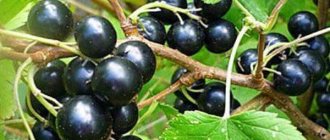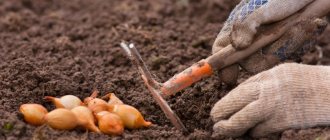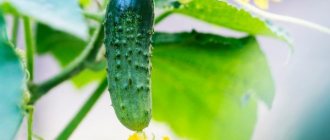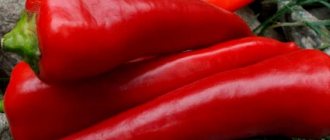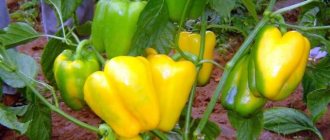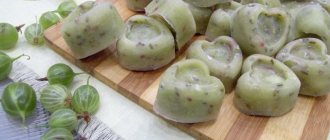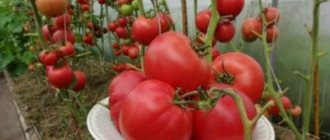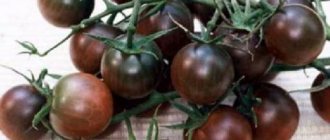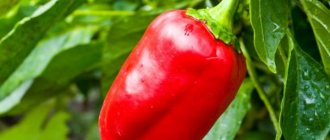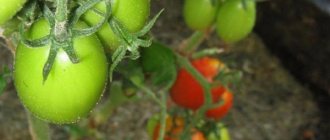Characteristics of the variety
Hercules pepper ripens late, the first fruits can be tasted only almost four months after the first shoots, and even then they are still green. It takes almost another month for the peppers to turn red, so they are most often picked when they are still unripe. They ripen normally during storage, but if seeds are required for sowing, one bush must be left for this purpose: full-fledged seeds come only from those fruits that have ripened in the garden. The fruits are sweet, their taste is rated “excellent”. The aroma is strong, traditional for most varieties of bell pepper, the flesh is juicy. The variety has a universal purpose: from fresh consumption to all kinds of preparations.
The fruits are large, almost regular in shape, very beautiful when ripe
The yield of the variety cannot be considered high: even in protected soil it does not reach three kilograms per square meter. Peppers tolerate transportation well and are stored for a long time. The Hercules pepper is not capricious in terms of weather: it is not afraid of small sudden cold spells, prolonged rains or drought. It has increased resistance to diseases, including viral ones.
Among the main advantages of the variety are:
- large fruit;
- versatility of use;
- good transportability;
- keeping quality of the crop;
- excellent taste;
- increased disease resistance;
- resistance to weather anomalies.
Among the noted disadvantages are not very good yields and increased demands on the content of nutrients in the soil. However, almost all peppers require a lot of nutrition, but the yield from a large-fruited variety could be expected to be higher: for example, the famous Agapovsky variety produces almost 4 times more fruits. True, their taste is rated somewhat lower.
When considering the characteristics of Hercules pepper, one cannot help but dwell on one important point. The fact is that due to someone’s light hand in literature, Hercules pepper is often called Hercules; many authors write that these are the same variety and greatly confuse readers
However, these are completely different varieties, although they appeared around the same time. The Hercules pepper is a French hybrid and its characteristics are completely different. It ripens much earlier, is much more productive, etc. Except that the shape of the fruits is quite similar to the fruits of Hercules, but they are in an elevated position. And Hercules is approved for cultivation only in the North Caucasus.
Hercules pepper looks similar to Hercules, but it is a completely different variety
Returning to the Hercules pepper, it is worth mentioning that it is late-ripening, and there are only a few such varieties: there are only about twenty registered in the State Register. Most of them are hybrids created in recent years. They, as a rule, exhibit higher productivity than Hercules, their large fruits are characterized by excellent taste, and are distributed everywhere. It can be assumed that the position of Hercules pepper may be shaken in the near future.
Description of the variety
Pepper variety Hercules f1 is mid-early. The period of fruit ripening, starting from the moment of sowing the seeds, is about 75 days. The plant is distinguished by its rather compact size, developed root system and good foliage (which is important for regions with hot summers). The fruits develop on pepper bushes evenly, simultaneously. On average, about 8-10 fruits ripen on one bush.
The fruits grow very large and massive. The length of the peppers can reach 11-12 cm, the diameter of the peppers is about 10 cm. The weight of one fruit is about 230-250 g. Individual specimens can weigh 300 g. The ripe fruit has a cuboid shape with four ribs, its pulp is very fleshy, juicy, thick the walls are considerable (0.5-1 cm). The color of the fruit in the state of technical maturity is dark green, in the biological state it is fiery red. It is worth mentioning separately about the taste of the fruits of the Hercules f1 variety: the taste is rich, with a considerable amount of sweetness and a slight bitterness inherent in the variety, which makes this pepper very piquant.
Read also: Cabernet Sauvignon grape variety: description, advantages and disadvantages
Gardeners in their reviews describe this variety extremely positively. Among the most significant advantages of Hercules pepper are the following:
- excellent yield - when grown in greenhouse conditions, up to 3.5 kg of large, beautiful fruits can be collected from one bush; when grown in open ground - about 2 kg of fruit;
- excellent keeping quality;
- presentation of almost 100% of ripening fruits - due to the excellent appearance of the fruits, they are ideal not only for home cultivation, but also for commercial use;
- abundant and long-term fruiting;
- high resistance to lack of sufficient moisture and high summer temperatures;
- high resistance to most pepper diseases.
Advice. If you plan to make winter preparations, including freezing vegetables, you should give preference to this particular variety of pepper, since it is considered one of the best options for freezing and processing during the cold season.
Prevention of possible diseases and pests
Pepper is highly resistant to common diseases such as blight and tobacco mosaic. But it can be susceptible to late blight. The problem can be eliminated by treatment with fungicides or garlic broth used to spray the bushes.
At times of high air temperatures, the variety is susceptible to attacks by aphids and whiteflies, as well as spider mites. Handy means such as ammonia and a solution of laundry soap will help overcome harmful insects.
Prepare the required solution according to one of the following recipes:
- Bar soap should be grated and the resulting shavings should be diluted in warm water at the rate of 100 g. soap per 10 liters of water. After the soap has completely dissolved, you can start spraying the plant. The procedure must be carried out in the morning, and the next day the solution is washed off the bushes with water. To completely eliminate insects, a course of treatments is required at intervals of 7 days.
- For 10 liters of water you need to take 30 ml of liquid soap, mix and add 20 ml of ammonia, treat the bushes with the resulting solution by spraying. This procedure, in addition to pest control, will become a source of additional feeding. It is carried out in the morning or evening.
If such methods do not have the desired effect, you should use insecticides, for example, Bioraid, following the instructions provided by the manufacturer on the packaging.
Hercules f1 is a high-quality hybrid crop with high yields. Large and beautiful fruits with juicy pulp and rich aroma will delight any gardener.
It’s easy to achieve a feat in agriculture with Hercules F1 pepper: characteristics and description of the variety
The French hybrid bell pepper Hercules is grown industrially. Its cube-shaped fruits with a thick wall are ideal for stuffing and winter preparations.
Description and characteristics of the variety
The hybrid is recommended for cultivation in open ground in the North Caucasus region. The crop is grown on private plots and farm enterprises.
Hercules is a mid-early sweet pepper with large, weighing up to 250 g, dark red cube-shaped fruits. The peppers look up, thick-walled, beautiful, with a strong gloss. The taste is good in technical and biological ripeness.
The plants are low, closed, with small dark green leaves covered with faint wrinkles.
Advantages and disadvantages
- ripens quickly;
- heat resistant;
- large-fruited;
- thick-walled;
- taste;
- marketable condition;
- universal purpose of fruits;
- no need to tie or pinch;
- resistant to nightshade viral diseases;
- yield higher than standard varieties;
- high content of nutrients;
- the last fruits are almost as large as the first.
Minuses:
- you cannot collect your own seeds;
- seed material is expensive and rarely available for sale.
Productivity
In state tests, the yield of Hercules pepper is higher than the standard varieties Lastochka and Podarok Moldova. In greenhouse conditions, more than 3 kg of fruits are harvested per square meter, in open ground - more than 2 kg. This is an excellent indicator for pepper. At least 94% of marketable products are obtained.
Landing
Even in the southern region, it is recommended to grow hybrid peppers in seedlings to save seed. Hercules pepper seeds have a high germination rate - no less than 80%. They are sown in boxes, choosing the time so that two-month-old seedlings with the first inflorescence formed are planted in the ground.
Plants can be planted directly into open ground if provision is made for covering the beds on cold nights. It is safer to plant them in pots and then plant them in a bed with a lump of earth when the seedlings reach standard sizes.
Growing and care
For 1 sq. m there are 3 bushes. Before planting, double superphosphate (25 g per sq. m) and potassium sulfate (50 g per sq. m) are added to the soil. Manure is applied in the fall (5 kg per sq. m). During spring digging, the soil is cleared of annual weeds.
The seedlings are planted in holes 15 cm deep, the distance in the row is 40 cm, the row spacing is 60 cm. The transplanted plant is generously watered. In the first 10 days, the bed is shaded with agrotex so that the plants do not lose turgor.
Watering
Plantings are watered once a week, in drought - twice a week. When the air temperature is below 20 degrees, watering is not carried out. For irrigation, use warm water, pouring the liquid directly under the bush and trying not to wet the leaves. Each plant needs 3 liters of water per watering.
Loosening
Roots develop better in loose soil: the plant becomes more powerful and the yield increases.
Ideally, loosen the soil after each rain or watering. The procedure improves gas exchange in the soil, helps reduce water evaporation and destroys weeds.
Top dressing
High yields of Hercules pepper should be ensured by intensive fertilizing. Without applying mineral and organic fertilizers, the bush will produce 5-6 fruits, and with proper feeding - up to 12.
Phosphorus and potassium make the fruits larger, more beautiful and healthier, nitrogen increases productivity.
First feeding
For the first feeding it is better to take bird droppings:
- Mix 200 g of litter and 10 liters of water.
- Leave to ferment for a week.
- Dilute the liquid 10 times with water.
- Pour the pepper along the grooves.
Second feeding
Ash is rich in phosphorus and potassium. You can take superphosphate.
- For 10 liters of water, a glass of ash or two tablespoons of superphosphate.
- Heat to a temperature of 70–80 degrees.
- Let cool.
- Pour one glass under each bush.
Third feeding
Use the same fertilizers as for the second.
Protection from diseases and pests
The hybrid is disease resistant. Pepper is almost immune to tobacco mosaic - the scourge of the sweet variety in the southern regions.
Problems that plague plantings:
Pesticides are used to get rid of pests and diseases. If the plants are already ripening fruits, a garlic-based tincture will help repel pests and cope with late blight:
- Chop 100 g of any parts of the garlic plant.
- Pour in a liter of hot water.
- Leave for a day.
- Dilute in 10 liters of water.
- Add a teaspoon of potassium permanganate.
- Spray the bushes with the solution every 10 days.
At the same time, you can spray tomatoes - in a rainy year, tomatoes suffer greatly from late blight.
A substitute for garlic tincture is biologically based drugs Trichodermin and Fitosporin. They are prepared according to the instructions on the package and sprayed on the bushes.
Description of Hercules F1 pepper, reviews, photos
Medium-early, productive, large-fruited, thick-walled pepper hybrid for open ground and film shelters.
The height of the bush is 75-80 cm. It requires tying to a support and pinching. How to shape Hercules peppers, see the video below.
Sweet pepper Hercules is included in the State Register for the North Caucasus region for cultivation in open ground on private farms.
Originator : Clause (France).
Fruit characteristics
The fruits are cube-shaped, large, red in color at maturity, with a wall thickness of up to 1 cm, juicy, of very good taste. The average fruit weight is 220-250 grams (up to 300 g). These peppers have good transportability and keeping quality. Suitable for fresh consumption, canning, and preparing lecho.
Sweet Hercules pepper is the leader among its fellows for processing and freezing. Due to the high quality of marketable products and early ripeness, it is in very high demand in the fresh vegetable market.
Productivity : 2.6 kg/sq.m (with watering and fertilizing).
Agrotechnics of cultivation, planting and care
Sowing pepper seeds for seedlings is carried out 60-70 days before the intended planting of plants in a permanent place. The optimal temperature for seed germination is 26-28°C.
When true leaves appear on the plants, they are transplanted into separate cups with a capacity of 0.3-0.5 liters.
Pepper does not like transplanting, so do not be surprised if after you have transplanted the seedlings into separate containers, they stop growing for a while. You can “smooth out” the stressful state a little by spraying the plants with Epin.
When to plant pepper seedlings in the ground
After the threat of return frosts has passed, the seedlings can be planted in a permanent location. Some people plant in open ground in May, while others only plant under covering material or under film; it all depends on the climatic conditions of your region.
When planting pepper seedlings in the ground for 1 sq. m it is recommended to place 4-6 plants, no more. Peppers are planted in the ground without being buried, but in exactly the same way as they grew in cups. Pepper plants, unlike tomatoes, very rarely produce lateral roots, so there is no point in deepening them.
Pepper responds well to watering and fertilizing with complex mineral fertilizers. During the summer, 2-3 feedings are usually done.
The history of growing the Hercules pepper variety
The Hercules variety pepper was registered in the State Register of the Russian Federation in 2007 at the request of an agro company from the Moscow region. It is not intended for industrial production, that is, for cultivation in large agricultural enterprises. But amateur gardeners and small farmers, including those growing peppers for sale, quickly fell in love with it.
The official document does not limit the cultivation of Hercules pepper to any specific climatic regions. At the same time, he notes the possibility of planting it both in greenhouses and in open ground. However, in reality, it is planted without shelter only in the very south, since the variety is very good in most respects, but it is late-ripening, and in the middle zone, and even more so in the north, without shelter it does not have time to ripen before the arrival of autumn cold. True, planting it in greenhouses is not very profitable: this pepper does not grow in very tall bushes and a lot of expensive space in the greenhouse is wasted. Therefore, the variety is most popular in the southern half of our country.
Characteristics and description
Sweet bell pepper Hercules was included in the State Register in 2007 with recommendations for use in private farms for cultivation in protected and open ground.
The Agro and Scientific Center for Vegetable Growing of the Moscow Region includes the following characteristics of Hercules pepper in the description of the variety:
- late-ripening crop (from germination to fruiting 135-145 days);
- forms semi-spreading bushes of medium height;
- dark green leaves with a slightly wrinkled surface are medium in size;
- the ripening cube-shaped fruit with a pronounced glossy surface at the stage of technical ripeness has a dark green color, and when it reaches biological ripeness it turns red;
- fruit length – 11-12 cm, wall thickness 5-7 mm;
- the number of nests is estimated from 3 to 4;
- the Hercules pepper variety has a good taste;
- shows resistance to such a dangerous disease as the tobacco mosaic virus.
The Hercules variety is universal: the fruits are used fresh and used in cooking to prepare a variety of dishes. Excellently preserved.
Care
Subsequent plant care differs little from traditional care and includes:
Watering. Since pepper is a moisture-loving plant, watering is carried out as the soil dries out - depending on the weather. Good results are obtained by using drip irrigation, in which moisture is supplied directly to the roots. Mulching. To protect the soil from drying out, as well as to control weeds, cover the soil around the peppers with mown grass, straw, and sawdust. Large farms use special synthetic materials for mulching that allow air and moisture to pass through. Weeding. When weeding, you should not loosen the soil around the plants to a great depth, since the roots are located quite close to the surface and can be damaged. Feeding. To obtain a bountiful harvest, plants need to be fed throughout the entire growing season. It is advisable to carry out the first fertilizing no earlier than a week after planting. Before the formation of ovaries, fertilize with green fertilizer - a diluted infusion of grass (in a ratio of 1:10), then proceed to fertilize with potassium and phosphorus fertilizers. The frequency of feeding is 2-3 times a month. It is advisable to fertilize after rain or watering, on damp soil. Garter. Pepper bushes are quite strong, but sometimes under the weight of the fruit, especially during the ripening period, the stems may not withstand the load. To avoid breaking the stems, they are tied to supports. Formation of bushes. To obtain a full harvest, gardeners pinch the tops of plants when their height reaches 15-20cm. All stepsons growing below the fork are also removed. Flowers and ovaries growing inside the bush are also removed. Plant Inspections
It is important to carefully examine the leaves and fruits of plants, so that if spots appear or growth inhibition occurs, take immediate action - remove diseased bushes, and carry out preventive spraying for healthy ones
If a greenhouse is used to grow peppers, it is necessary to provide ventilation in it, since humid air can cause many fungal diseases.
Since peppers in greenhouses usually grow taller than in open ground and can shade each other, they are planted more sparsely, and if they are very dense, some of the foliage is torn off.
During the hot season, the temperature in greenhouses often rises above 40 degrees. The peppers experience stress and as a result may lose color (fruit set does not occur). To prevent this, if possible, open the side walls of greenhouses or cover them from direct sunlight.
Hercules pepper is a variety that ripens in late summer - early autumn. In order to have time to collect the entire harvest that has started on the bushes, it must be limited - excess flowers or ovaries must be cut off. To increase the yield, peppers are harvested at the stage of technical maturity - green.
Greenhouses will allow you to harvest peppers right up to frost, especially since even harvested green peppers have a wonderful taste. The good keeping quality of the fruit allows the pepper to ripen and be stored for a long time.
Care plan
According to reviews, Hercules F1 pepper responds positively to watering and fertilizing. Caring for the variety also includes loosening, mulching the soil with humus, and forming a bush.
The Hercules variety is formed into 1 stem when planted in open areas. If plants are planted in a greenhouse or greenhouse, then 2 stems are left. Side shoots are removed from peppers.
Read also: Potato Slavyanka – description of the variety, photos, reviews
Watering the plantings
Before flowering, it is enough to water the peppers every week. When fruiting, plants are watered twice a week. Each bush requires 3 liters of water.
When the fruits are forming, the intensity of watering is increased to 2 times a week. To stimulate the ripening of Hercules fruits, watering is stopped 10-14 days before harvest.
The Hercules variety is watered from a watering can at the root. Moisture is taken from the barrels when it has settled and warmed up. Exposure to cold water is stressful for plants. For watering, choose the evening or morning period.
Feeding peppers
Regular feeding of Hercules F1 pepper stimulates its development and fruit formation. During the season, plants are treated by spraying and applying fertilizers at the root.
After planting the plants, the first fertilizing is based on a solution of urea (10 g) and double superphosphate (3 g) per 10 liters of water. 1 liter of the resulting fertilizer is applied to the plants.
During flowering, Hercules F1 peppers are fed with boric acid (4 g per 2 liters of water). The solution stimulates fruit formation and prevents the ovaries from falling off. Fertilizer is applied by spraying. When you add 200 g of sugar to the solution, pepper flowers will attract pollinating insects.
Repeated feeding of the Hercules variety with phosphorus and potassium is carried out during the ripening period of peppers. Plants are watered at the root.
Diseases and pests
Diseases
Hercules f1 variety is not new - over many years of cultivation it has shown itself to be resistant to diseases. The variety is particularly resistant to:
- tobacco mosaic;
- pepper spotting;
- potato virus.
A popular preventive remedy is prepared using garlic. For the medicine you need 100 g of chopped garlic (stems, cloves, leaves), pour a glass of hot water, leave for 1 day. Dissolve the finished infusion in 10 liters of water, add 1 g of potassium permanganate. Bushes can be sprayed with this solution every 14 days at any stage of the growing season. Biological products such as Trichodermin or Fitosporin are safe to use. Prepare a solution in accordance with the manufacturer's instructions and spray the bushes.
Pests
During periods of high temperatures and drought, Hercules f1 pepper can be affected by aphids, spider mites, and whiteflies. Such simple means as laundry soap or ammonia will help you cope with the pest.
- To treat bushes, laundry soap (100g) is grated and poured with 10 liters of warm water, kneaded until completely dissolved and sprayed on the bushes. The treatment is carried out in the morning and washed off with water the next day. Treatments are carried out several times at intervals of 7-10 days until the pests disappear.
- Add 20 g of ammonia and 30 g of liquid soap to 10 g of water and spray the bushes. Spray in the evening or morning. This solution repels pests and at the same time serves as fertilizing.
If folk recipes fail to solve the problem, the bushes are treated with insecticides (Aktara, Biorad, Aktelik), maintaining the dosage and method of application specified by the manufacturer.
Hercules F1 (CLAUSE)
Sweet pepper Hercules F1
SWEET PEPPER - REVIEW OF FOUR EXCELLENT VARIETIES!
Sweet pepper, varieties
Huge harvest of pepper by variety
"Hercules f1": advantages and features
A highly productive thick-walled hybrid of sweet peppers, represented by the French variety series Clause. It is characterized by uniform ripening of fruits, long-term fruiting, and the ability to form up to 12 peppers on 1 bush. The color of technically ripe peppers is green, while that of biologically ripe ones is red and rich.
Attention! The hybrid "Hercules f1" is characterized as a pepper with a medium-early ripening period; its fruits can reach technical ripeness in 130-140 days.
Yield indicator from 1 bush:
- indoors – up to 4 kg;
- open – up to 2 kg.
Large peppers, the average weight of which reaches 200-250 g, and in some specimens 350 g, have a cuboid shape. The average length of the fruit is about 12 cm, diameter is about 10 cm, wall thickness is 7-10 mm.
Confirmation of the high commercial qualities of peppers of the Hercules f1 variety is:
- juicy fleshy walls;
- sweet with a subtle note of bitterness, adding piquancy to the taste;
- with a small cotyledon and a moderate number of seeds;
- excellent transportability and keeping quality;
- the ability to use it fresh and processed, for freezing.
Pepper bushes are vigorous and densely leafed, their habit is compact.
The variety is resistant to a number of viral infections typical of peppers, including:
- tobacco mosaic;
- cucumber mosaic;
- spotting;
- late blight.
Caring for the plant after transplanting into the ground
Caring for plants after planting in the ground consists of:
- maintaining an optimal microclimate;
- formation of bushes;
- glaze;
- application of fertilizers;
- loosening;
- weed removal;
- hilling;
- harvesting.
Optimal conditions for pepper growth are temperature +23...+27° C and humidity 60–65%. As the pepper grows, it “likes” to touch the leaves of neighboring plants. Therefore, in order for air to circulate freely around the bush, the crown needs to be thinned.
Peppers need to be watered several times a week. A switch to daily watering will be necessary if the weather is dry and hot. To retain moisture, crops are mulched. It also prevents weeds from germinating and reduces the risk of late blight and pests.
If you need to remove weeds, work carefully with a garden hoe, because peppers have a root system located close to the surface. Try not to damage it.
Fertilizers are applied 2 weeks after planting the plants in the ground and then every 3–4 weeks. As the harvest appears, keep in mind that peppers bear fruit in several waves, and it is not advisable to leave ripe fruits on the bushes. This way you delay the development of the next group of fruits.
Control pests. Peppers are loved by aphids and flea beetles. They are dangerous twice: because they damage plant tissue and because through damage they become infected with bacteria. To control pests, insecticides with a broad spectrum of action or aimed at a specific type of insect are used.
Important! Heat destroys the nutrients in bell peppers, so it's best to eat them raw. Cook the pepper so that the cooking temperature is as low as possible and the processing is short.
Watering and fertilizing
Standard watering rules:
- Water as the soil dries - 2-3 times a week. In hot weather - every day. Before watering, make sure the soil is dry by 4–6 cm.
- Water should flow slowly so as not to destroy the delicate roots with an intense flow of water.
- Do not saturate the soil below 10-15 cm - this is the distance at which the roots of the pepper are located.
- Try not to let water get on the leaves. This increases the risk of late blight or rot.
Peppers require nutritious soil to thrive. Since you already added humus when planting, the pepper does not need additional feeding, which can be done 2 weeks after planting. Therefore, if you see that the plant is developing well, carry out the next feeding 5-6 weeks after planting the seedlings in the ground.
Choose both organic and synthetic fertilizers. Farmers who practice eco-farming always apply organic matter as a more natural fertilizer without side effects.
Use a slow-release organic fertilizer such as manure. The slow release of minerals improves the soil. But fast growth leads to the fact that the plants are stretched, the trunk becomes fragile and unable to hold the harvest of Hercules.
Find out how to water peppers correctly and how often.
Feeding schedule:
- 10 days after planting;
- in the budding phase;
- in the fruit formation phase.
You can use fertilizers in which the ratio of nitrogen, phosphorus and potassium is the same. Such compositions are called balanced. The fertilizer is dissolved in 10 liters of water and 1 liter of liquid is applied to each bush.
Hilling and loosening the soil
Loosening of the soil is carried out on the second day after watering. This is necessary to remove weeds and weaken the soil. After watering, the soil becomes compacted, does not allow oxygen to pass through and inhibits development. To avoid this, it must be loosened. If the crops are covered with mulch, there is no need to loosen them. A layer of mulch material prevents the development of weeds, moisture loss and compaction.
The Hercules variety is tall. Its height is from 0.5 to 0.8 m. The weight of the harvest of 1 bush is about 3 kg. To strengthen the root system, hilling is carried out. This is the process of increasing the earthen mound around the trunk of the plant. Hill up the bush when it reaches a height of 0.3 m.
Plant Formation
The pepper forms the plant in a "Y" shape. These are skeletal branches. If your bush has become thick enough, you need to start shaping it. Skeletal branches are tied to a trellis or stake. From each of these branches side shoots extend to the side. Cut the first of them, and then every third, alternating sides: inner and outer.
Features of cultivation and care
It should be noted right away that the Hercules f1 pepper is very demanding in terms of care: it will require high-quality fertilizing, constant monitoring of the condition of the growing bushes, mulching if necessary, plant protection, etc.
Peppers are grown exclusively using the seedling method. Seeds should first be prepared according to the standard procedure: selection of viable specimens, disinfection of seed material. The first action is carried out by visually comparing the seeds with each other or using a saline solution (do not forget to wash the seeds after this), the second - using a solution of weak potassium permanganate. After pre-treatment, the seeds must be properly dried.
Since the variety is quite sensitive to cold, sowing seeds for seedlings should be carried out approximately by the end of March, when the air temperature will consistently reach +15 degrees.
Since a distinctive feature of any pepper variety is the weak root system of young sprouts, it is better to sow in separate peat pots. The maximum depth of immersion of seeds in a moistened soil substrate is about 1 cm. In the first weeks, the seeds will require a sufficient amount of heat, so peat pots should be placed in a warm, well-lit room with an air temperature of at least +16 degrees.
If all planting conditions are met, the first shoots should appear within a week. Planting seedlings in the ground is carried out approximately 40-50 days after sowing the seeds. The main sign that a young plant is “ready” for replanting is the presence of at least 5-6 full leaves.
During the process of active growth of bushes, it is important to monitor the formation of stepsons and remove them in a timely manner. The plant is formed into one stem (if we are talking about an open area) or two stems (when planted in a greenhouse).
When the first fruits begin to appear, the pepper should be “helped” by strengthening it with a small wooden support. Otherwise, the bushes will begin to bend to the ground under the weight of massive fruits.
As for watering, it should be drip. This way you can save your time while maximizing the effect. The soil will be moistened locally and in moderation - excess moisture will only harm the pepper.
Pepper Hercules f1 does not require a large amount of fertilizing. It is enough just to add a nitrogen-mineral complex approximately a couple of weeks after planting in the ground and repeat the procedure after another couple of days. The last fertilizing is applied at the beginning of the fruiting period.
This concludes our acquaintance with the Hercules f1 pepper variety. As you can see, this plant is not very demanding, and the results of cultivation are simply amazing. Happy harvest!
Pepper seedlings
The Hercules variety is grown by seedling method. Seeds are germinated at home. Before starting work, prepare the soil and planting material. When the pepper grows, it is transferred to a permanent place in an open area, in a greenhouse or greenhouse.
Preparing for landing
Seeds of the Hercules variety are planted in March or February. They are first wrapped in a damp cloth and kept warm for a couple of days. This treatment stimulates the appearance of sprouts.
If the seeds have a brightly colored shell, they are not treated before planting. This planting material has a nutrient shell, due to which the seedlings develop faster.
The soil for planting the Hercules variety is prepared from the following components:
- humus - 2 parts;
- coarse river sand – 1 part;
- land from the site - 1 part;
- wood ash - 2 tbsp. l.
The resulting soil is heated for 15 minutes in a microwave or oven. Boxes or individual cups are prepared for seedlings. One option is to use peat pots.
If you grow Hercules peppers in boxes, then when 1-2 leaves appear, you need to pick them out into separate containers. The culture does not tolerate such changes in conditions, so picking should be avoided if possible.
Advice! Hercules pepper seeds are deepened into the soil by 2 cm.
The crops are watered and the containers are placed under glass or film. Seed germination occurs at temperatures above 20 degrees. The emerging shoots are transferred to the window.
Conditions for seedlings
Seedlings of the Hercules variety are provided with certain conditions:
- temperature regime (in the daytime - no more than 26 degrees, at night - about 12 degrees);
- moderate soil moisture;
- regular watering with warm, settled water;
- ventilation of the room;
- absence of drafts;
- increased air humidity due to spraying.
Before transferring the plants to a permanent place, they are fed twice with Agricola or Fertika fertilizer. Between treatments take a break of 2 weeks.
2 weeks before planting, young plants need hardening. They are transferred to a balcony or loggia, first for several hours, then this period is gradually increased. Then the transplant will bring less stress to the peppers.
Planting peppers
The Hercules variety is planted in open areas, greenhouses or greenhouses. The transplant is carried out at the end of May, when the air temperature rises to 15 degrees.
Pepper prefers light soils with low acidity. The preparation of the beds is carried out in the fall, when the soil is dug up and added per 1 square meter. m rotted manure (5 kg), double superphosphate (25 g) and potassium sulfate (50 g).
The place for growing the Hercules variety is chosen depending on the crop that previously grew on it. Good predecessors for peppers are zucchini, cucumbers, onions, pumpkin, and carrots.
It is not recommended to plant if any varieties of peppers, eggplants, potatoes, or tomatoes previously grew in the garden bed. These crops have common diseases that can spread to new plantings.
The order of planting Hercules peppers:
- Preparing holes 15 cm deep.
- The holes are placed in increments of 40 cm. 40 cm are also left between the rows.
- Add 1 tbsp to each hole. l. complex fertilizer including potassium, phosphorus and nitrogen.
- Plants are moved into pits along with a lump of earth.
- The roots of the peppers are covered with earth, which is lightly compacted.
- Plants are watered abundantly.
After transplantation, peppers need about 10 days to adapt. During this period, no moisture or fertilizer is added.
Necessary conditions for an excellent harvest
Pepper Hercules (Hercules), which is classified as a mid-early and productive variety, can not only provide a family with bell pepper for the winter and replenish its diet in the summer, but can also be grown for sale, bringing significant profit. To obtain a good harvest, several important conditions must be met:
- timely planting of seeds for seedlings;
- not earlier than transplanting seedlings into open ground (the ground should have already warmed up from the last frost);
- protection of bushes from night cold in cold climates;
- not a dark, but not a sunny place with no drafts;
- mandatory 2-3 times feeding with combined mineral fertilizers;
- loosening (or better yet, mulching) the soil at the roots of the plant;
- constant and timely watering;
- installation of supports and small garter of the plant;
- removing weeds from the surrounding area.
Hercules is resistant to common pests, but to prevent further reproduction, at the first appearance of any of them, the bush should be treated with an appropriate product. Fruiting remains intense until mid-September, but with a mild and warm autumn it can last longer.
The beneficial properties of bell pepper are widely known. The alkaloid capsacin contained in it not only gives vegetables an original taste, but also stimulates gastric secretion and improves appetite. A rich set of vitamins and minerals protects the human body from many pathologies, strengthens joints and blood vessels, and even prevents baldness. You can make cosmetic masks from the Hercules variety because its pulp is thick and juicy.
Growing
To get the highest yield of smooth, tasty peppers, it is necessary to provide the Hercules variety with suitable growing conditions and provide it with proper care.
Seed preparation
Before sowing, it is necessary to properly prepare the pepper seeds. They are calibrated and small and broken seeds are rejected. You can check the germination of seed by placing it in salted water. Those seeds that remain on the surface after 20 minutes are non-viable, and those that have sunk will produce strong sprouts.
Preparation of pepper seeds for planting includes:
- disinfection in fungicides;
- growth activation in stimulants;
- soaking in water for early emergence of shoots.
Pepper seeds are laid out on the surface of the soil, moistened, and placed in a greenhouse.
Peppers are difficult to tolerate damage to the root system, so it is recommended to grow them without picking. To do this, seeds are planted in cups, 1-2 seeds each, subsequently removing the weaker sprout.
Soil preparation
For sowing, loose, light purchased soil is used. It does not contain weed seeds, pests or diseases. It is not recommended to add garden soil, as it can cause early death of seedlings due to pests and diseases.
The soil for peppers in the country is prepared in advance, in the fall, or a month before planting seedlings in the spring. The predecessors of the crop in the garden can be legumes or melons. It is better to plant tomatoes and cucumbers away from peppers.
Complex mineral compounds are added during digging. The soil structure is improved by adding compost, humus, and a small amount of peat.
Seedling care
From the moment the seedlings emerge, the plants are moved to the most illuminated place, where direct sunlight does not reach. With a lack of light, Hercules seedlings stretch out and become more fragile.
If solar activity is still insufficient, it is recommended to provide the seedlings with additional lighting.
Watering is carried out as the soil surface dries. Fertilizers are added once every two weeks to provide the plants with all the necessary micro- and macroelements.
The seedlings are ready for planting by 70-75 days from germination.
Pepper "Hercules": description and varietal characteristics
Hercules F1 is a mid-season crop; the fruits ripen approximately 75 days after the seeds are planted in the soil. The plant has a compact size, and this makes it much easier to care for, and also allows you to significantly save space on the site. Despite its small size, the root system is well developed, it penetrates deep into the ground and provides the plant with moisture and nutrition.
Due to the abundance of foliage, the plant tolerates hot days without any problems, but sometimes it is necessary to remove some of the leaves, as they draw nutrients onto themselves and shade the fruits.
Peppers ripen evenly and, almost at the same time, up to 10 fruits grow on one bush, in rare cases up to 13 pieces. All of them are large and fleshy, the length of the average fruit can vary from 10 to 12 cm, the diameter can reach 12 cm, and the weight is from 220 to 260 g. Peppers look like large cubes with four ribs, inside of which there is juicy and fleshy pulp, the thickness of which reaches up to one and a half centimeters.
Peppercorns have a dark green hue while they are unripe, and during the ripening process they acquire a fiery red color. The taste is distinguished by an interesting piquancy, sweetness with some bitterness; it is this feature that distinguishes Hercules from other varieties of sweet pepper.
Based on reviews from gardeners, one can understand that the portrait of Hercules F1 emerges as very attractive and interesting both from the point of view of growing on the site and from the point of view of using fresh vegetables in cooking.
Advantages of Hercules F1 pepper
Excellent varietal characteristics give the right to speak of the Hercules variety as the most productive and sustainable variety. Judge for yourself, here are some of the features of the vegetable:
- The variety has a high yield; if you grow plants in a greenhouse, you can harvest up to 4 kg of fruit; in an open area, gardeners on average collect 2.5 kg of fruit from one bush.
- Hercules pepper is stored and can be stored for quite a long period of time, therefore it is one of the most favorite varieties among farmers and agricultural producers.
- Excellent marketability of pepper puts it in first place in the ranking compiled by summer residents and merchants. Peppers look 100% biologically ripe, which is why they are given the main prizes at agro-industrial exhibitions and fairs.
- Fruiting occurs simultaneously and lasts almost two months.
- Plants are resistant to moisture deficiency and elevated temperatures, so they are well suited for cultivation in the southern regions.
- The use of Hercules pepper can be different: it is excellent for processing, suitable for freezing, ideal as the main component in winter preparations, not to mention fresh consumption.
Disadvantages of the Hercules F1 hybrid
- For those who like to pick fresh fruits at the beginning of summer, this hybrid is clearly not suitable, as it is mid-early.
- The fruits also color rather slowly; you will have to wait until the desired bright red tint appears.
- Hercules requires too much time, effort and attention; most gardeners are looking for unpretentious varieties that do not require special attention, so they prefer to bypass it.
- With a sudden cold snap, the hybrid may develop rhizoctonia.
Despite such convincing negative facts, the Hercules variety remains in demand and loved by hundreds of gardeners, especially those who live in the southern regions of the country. There the pepper does not need film covering, it reacts calmly to the southern sun and quite quickly acquires that same carmine-red hue that attracts consumers.
Description of the variety
Description of Hercules F1 pepper:
- mid-early maturation;
- bush height 75-80 cm;
- fruiting 70-75 days after transfer of seedlings;
- yield per bush is from 2 to 3.5 kg.
Characteristics of the fruits of the Hercules F1 variety:
- cuboid shape;
- average weight 250 g, maximum – 300 g;
- wall thickness up to 1 cm;
- fruit length – 11 cm;
- As it ripens, it changes color from green to dark red;
- Even green fruits have a very sweet taste.
The fruits of the Hercules variety are suitable for fresh consumption, freezing and processing. Due to its good presentation, the variety is grown for sale.
Read also: Pepper for open ground
Peppers can be harvested at the technical maturity stage. Then its shelf life is 2 months. If the fruits have already turned red on the bushes, then after picking they need to be processed as quickly as possible.
